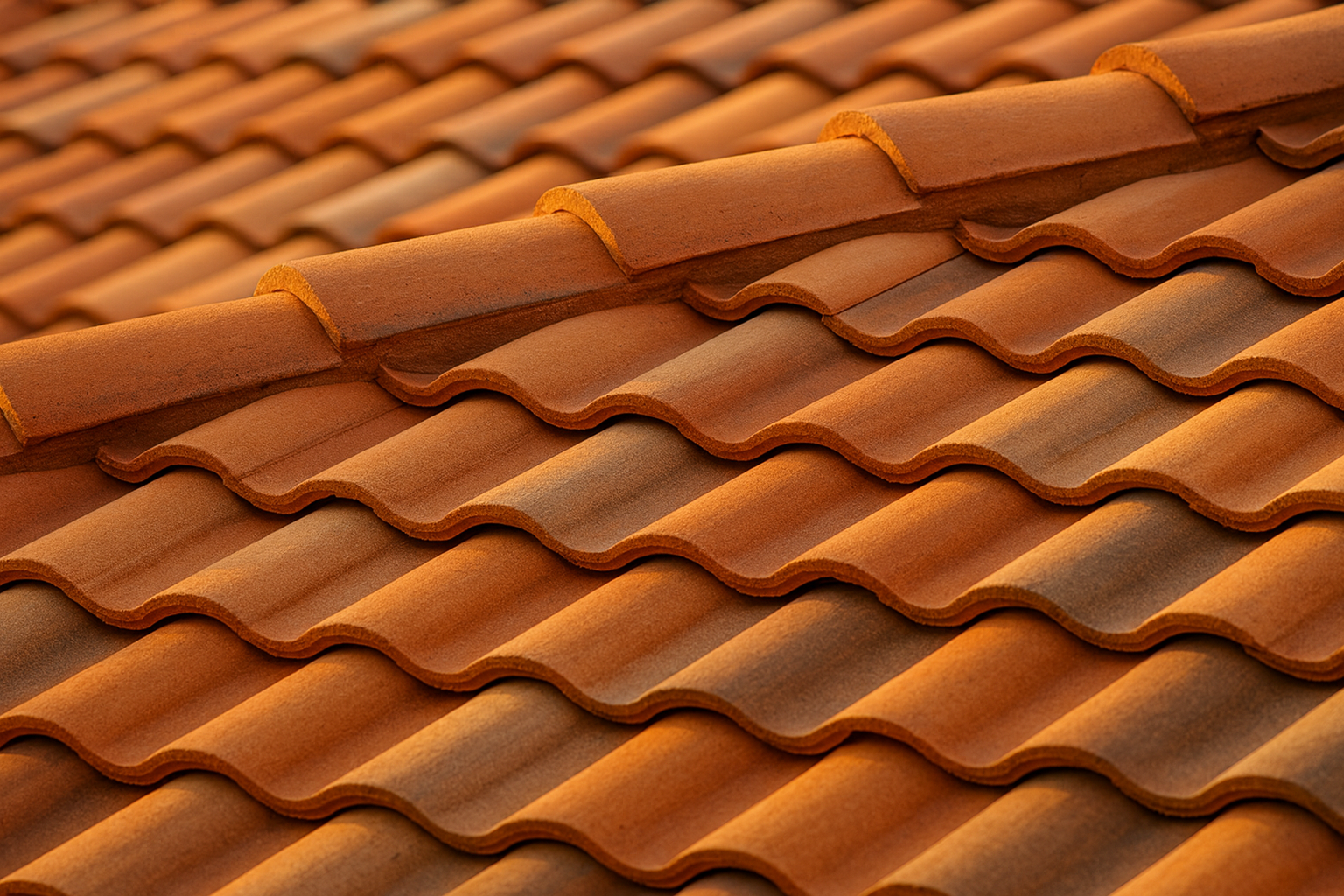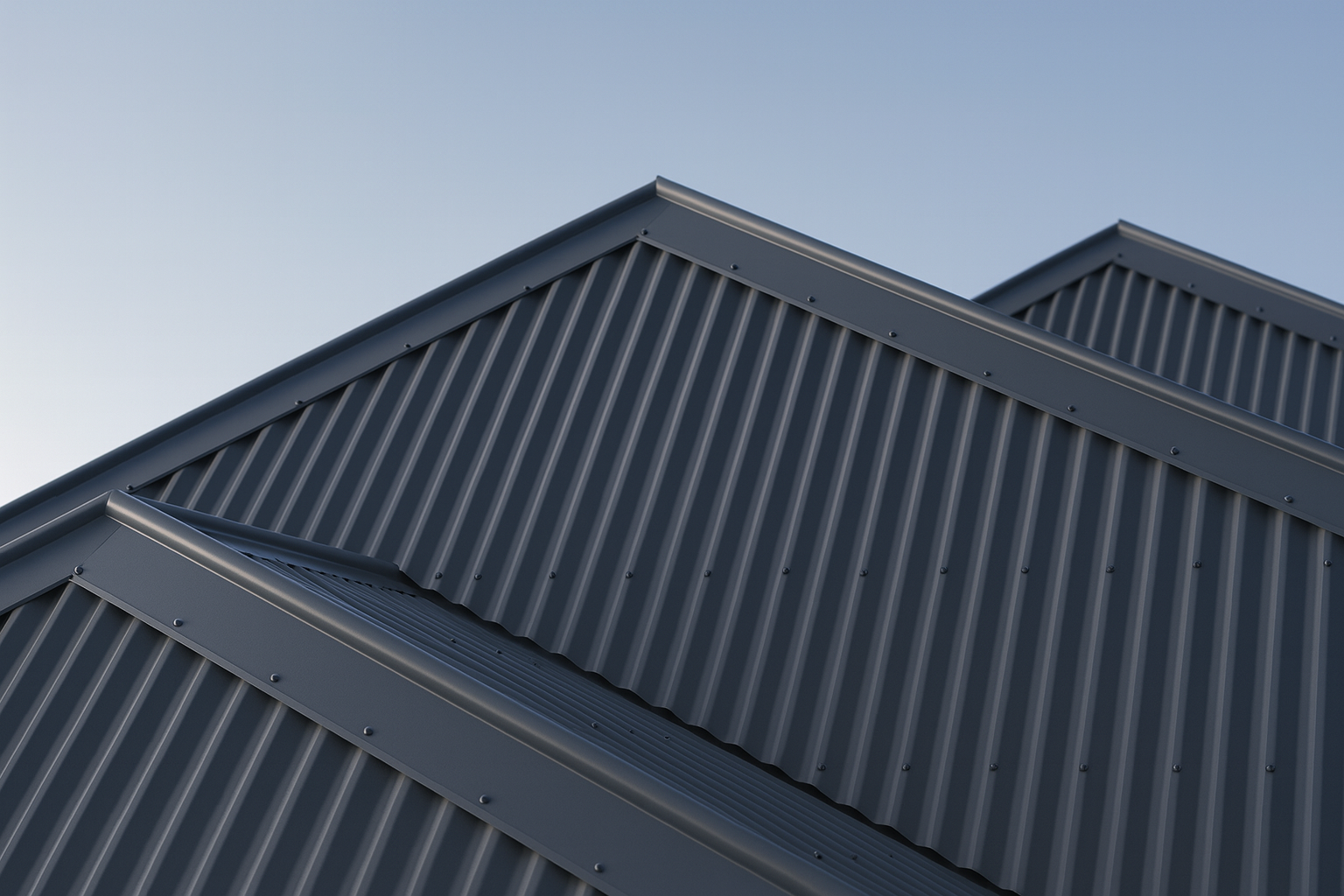Table of Contents
- What this guide covers
- Quick answer summary
- Colorbond vs Roof Tiles at a glance
- Coastal performance
- Energy & comfort considerations
- Aesthetics & planning
- Maintenance & longevity
- Noise & rain considerations
- Sustainability factors
- When Colorbond is the better choice
- When roof tiles are the better choice
- What we recommend locally
- Get expert advice
- Frequently Asked Questions
What this guide covers
Choosing between Colorbond steel and roof tiles is one of the biggest decisions Peninsula homeowners face when re-roofing or building. This comprehensive guide compares both options specifically for Mornington Peninsula conditions, covering everything from coastal salt air performance to council planning requirements.
Whether you're in Mornington, Mount Eliza, Frankston, Sorrento, or anywhere across the Peninsula, local conditions like salt spray, strong southerly winds, and UV exposure significantly impact your roofing choice. We'll help you weigh the pros and cons based on your specific location and needs.
Quick answer summary
Colorbond Best For:
- Coastal homes within 5km of surf — superior corrosion resistance (especially Colorbond Ultra)
- Lighter weight structures — 90% lighter than concrete tiles
- Fast installations — completed in days not weeks
- Modern aesthetics — clean lines and contemporary appeal
- Wind resistance — excellent performance in Peninsula conditions
- Lower maintenance — minimal ongoing upkeep required
Tiles Best For:
- Classic aesthetic appeal — traditional Peninsula character homes
- Acoustic dampening — naturally quieter in heavy rain
- Spot repairs — individual tile replacement on older houses
- Thermal mass — helps moderate temperature swings
- Heritage areas — often required in heritage overlay zones
- Budget considerations — lower upfront material costs
Colorbond vs Roof Tiles at a glance
| Factor | Colorbond Steel | Roof Tiles |
|---|---|---|
| Weight on structure | 6-8 kg/m² (minimal load) | 50-65 kg/m² (significant structural load) |
| Coastal corrosion resistance | Excellent (Colorbond Ultra within 1km of surf) | Good (with proper underlays and fixings) |
| Wind performance | Superior (engineered fixing systems) | Good (individual tiles can lift or crack) |
| Lifespan & warranty | 25-30+ years (15-25 year warranties) | 50+ years (20-30 year warranties) |
| Maintenance requirements | Low (occasional wash, gutter cleaning) | Moderate (re-bedding, broken tile replacement) |
| Thermal performance | Requires proper insulation and sarking | Natural thermal mass, still needs insulation |
| Noise (rain/hail) | Quiet with proper insulation | Naturally quieter surface |
| Installation speed | Fast (2-5 days typical home) | Slower (1-2 weeks typical home) |
| Bushfire rating (BAL) | Excellent (suitable for high BAL ratings) | Very good (depends on tile type and profile) |
| Cost expectations | Higher material cost, lower labour | Lower material cost, higher labour |
Coastal performance (salt, UV, wind)
The Peninsula's coastal environment is particularly demanding on roofing materials. Salt spray, intense UV from reflected water, and strong southerly winds create unique challenges.
Salt Air Corrosion
Colorbond Steel: The zinc-aluminium coating provides excellent protection against salt air corrosion. For homes within 1km of the surf (Sorrento, Portsea, Safety Beach), Colorbond Ultra offers enhanced marine-grade protection with additional corrosion resistance.
Roof Tiles: Concrete and terracotta tiles handle salt air well, but the real vulnerability is in fixings, flashings, and underlays. Stainless steel or marine-grade fixings are essential for coastal installations.
Wind Performance
Peninsula homes regularly experience wind speeds exceeding 80km/h during winter storms. Colorbond's continuous fixing system and engineered clips provide superior wind resistance compared to individual tile fixings that can fail over time.
Technical note: For areas classified as Wind Region B or C, both materials can perform well with correct installation. However, Colorbond's continuous attachment provides inherently better uplift resistance.
Energy & comfort: sarking, insulation, ventilation
Both roofing types require proper thermal design for Peninsula conditions, where summer temperatures can exceed 35°C while winter brings cold southerly winds.

Proper insulation and sarking are crucial for both Colorbond and tile installations
Insulation Requirements
- Both systems need bulk insulation: R1.8-R2.5 minimum for Peninsula conditions
- Reflective sarking essential: Prevents condensation and provides radiant heat barrier
- Ventilation critical: Ridge and eave vents prevent moisture buildup
- Colour considerations: Light colours reflect more heat regardless of material
Thermal Mass vs Reflection
Tiles provide thermal mass that moderates temperature swings, while Colorbond relies on reflective properties and insulation. Both can achieve excellent thermal performance with proper design.
Aesthetics & planning: heritage streets, profiles, colours
Peninsula suburbs have distinct architectural characters that influence roofing choices, particularly in heritage overlay areas.
Heritage and Planning Considerations
- Heritage overlays: Many Peninsula streets require tiles or specific colours/profiles
- Colorbond palette: 22 standard colours plus metallic range for contemporary homes
- Tile varieties: Concrete, terracotta, and specialty tiles for different architectural styles
- Profile choices: Both materials offer various profiles from traditional to contemporary
Check with your local council (Mornington Peninsula Shire, Frankston City) regarding heritage requirements before making final decisions.
Maintenance & longevity
Colorbond Maintenance
- Annual rinse: Wash with fresh water to remove salt buildup
- Gutter cleaning: Keep valleys and gutters clear of debris
- Fastener inspection: Check for loose screws every few years
- Surface coating: May need repainting after 15-20 years in harsh coastal conditions
Tile Maintenance
- Individual replacements: Broken tiles should be replaced promptly
- Re-bedding/re-pointing: Ridge and hip tiles every 10-15 years
- Moss and debris removal: Regular cleaning prevents water backup
- Flashing maintenance: Valleys and penetrations need periodic attention
Peninsula-specific maintenance: Both materials benefit from bi-annual rinses to remove salt buildup, especially after storm periods when salt spray is heaviest.
Noise & rain: misconceptions
One of the most common concerns about metal roofing is noise during rain and hail. Modern installation techniques have largely eliminated this issue.
The Reality of Metal Roof Noise
- Proper insulation eliminates noise: Bulk insulation and sarking create effective sound barriers
- Solid timber substrate: Metal over plywood or hardwood decking is remarkably quiet
- Correct fixing: Proper screw patterns prevent drumming and movement noise
- Heavy rain comparison: Well-insulated Colorbond can be quieter than tiles in severe weather
When Tiles Have the Advantage
Without adequate insulation, tiles do provide better natural sound dampening. However, building code requirements for insulation mean both systems should be comparably quiet when properly installed.
Sustainability
Colorbond Sustainability
- 100% recyclable: Steel can be recycled indefinitely
- Lower transport emissions: Lighter weight reduces transport impact
- Energy efficient production: Modern steel production is increasingly efficient
- Longevity: 25-30 year lifespan with proper maintenance
Tile Sustainability
- Natural materials: Clay and concrete from abundant raw materials
- Longevity: 50+ year lifespan reduces replacement frequency
- Recyclable: Concrete tiles can be crushed for aggregate
- Breakage waste: Tile breakage during transport/installation creates waste
When Colorbond is the better choice
- Within 5km of the coastline — salt air corrosion resistance is paramount
- Structural limitations — existing structure can't support tile weight
- Quick installation needed — weather constraints or tight timelines
- Modern architectural style — clean lines and contemporary aesthetics required
- Minimal ongoing maintenance — prefer low-maintenance solution
- High wind exposure areas — exposed ridgelines and open coastal sites
- Future solar installation — easier mounting and penetration sealing
When roof tiles are the better choice
- Heritage overlay requirements — council mandates traditional materials
- Character home restoration — maintaining authentic Peninsula architecture
- Budget constraints — lower upfront material costs (though higher installation)
- Partial roof repairs — matching existing tiles on older homes
- Maximum lifespan priority — 50+ year service life expected
- Thermal mass benefits — homes without adequate insulation or cooling
- Traditional aesthetic preference — family preference for classic appearance
What we recommend locally
Based on 25+ years experience across the Peninsula, our recommendations vary by location and exposure:
High Coastal Exposure (0-1km from surf)
Recommend: Colorbond Ultra or premium marine-grade tiles with stainless fixings. The enhanced corrosion resistance of Colorbond Ultra makes it the preferred choice for Sorrento, Portsea, and exposed Mornington waterfront properties.
Moderate Coastal (1-5km from surf)
Either option works well with proper specification. Standard Colorbond provides excellent performance, while quality concrete tiles with marine-grade fixings and proper sarking are equally suitable. Choice often comes down to aesthetics and budget.
Inland Peninsula (5km+ from surf)
Both perform excellently. Heritage requirements, architectural style, and personal preference become the primary decision factors. Standard fixings and underlays are adequate for both materials.
Professional assessment recommended: Every home has unique factors including roof pitch, orientation, surrounding trees, and structural condition. We provide free assessments to determine the best solution for your specific situation.
Get expert advice
Choosing between Colorbond and roof tiles involves many factors specific to your home's location, structure, and your personal preferences. Our experienced team provides comprehensive assessments covering:
- Structural capacity evaluation for different roofing weights
- Local council and heritage requirements
- Coastal exposure assessment and material recommendations
- Energy efficiency and insulation requirements
- Detailed cost comparisons including long-term maintenance
- Timeline and installation process explanation
We service all Peninsula areas including Mornington, Mount Eliza, Frankston, Sorrento, and surrounding suburbs. For personalised advice on your re-roofing project or roof restoration, contact our team for a comprehensive on-site assessment.
Frequently Asked Questions
Is Colorbond louder in the rain than tiles?
Not when properly installed. Modern Colorbond installations include bulk insulation and sarking that effectively eliminate rain noise. A properly insulated metal roof can actually be quieter than tiles during heavy rain, as tiles can rattle in strong winds.
Which is better near the beach on the Mornington Peninsula?
For homes within 1km of the surf, Colorbond Ultra offers superior corrosion resistance. Between 1-5km from the coast, both materials perform well with proper specification. Beyond 5km, both options are equally suitable from a coastal exposure perspective.
Can I switch from tiles to Colorbond?
Yes, this is common and often beneficial. Colorbond is 90% lighter than concrete tiles, which reduces structural load and can eliminate sagging issues. However, a structural assessment is recommended to ensure the roof frame and fixings are suitable for the new loading conditions.
How long does a re-roof take?
Colorbond re-roofing typically takes 2-5 days for a standard home, depending on size and complexity. Tile installation usually takes 1-2 weeks. Weather delays can affect both timeframes, but metal roofing is less susceptible to rain delays during installation.
What maintenance do Colorbond roofs need? Tiles?
Colorbond requires annual fresh water rinses (especially important near the coast), gutter cleaning, and occasional fastener checks. Tiles need broken tile replacement, re-bedding/re-pointing every 10-15 years, and regular debris removal. Both benefit from bi-annual professional inspections.
Will a new roof improve home energy efficiency?
Yes, significantly. Modern installations include proper insulation (R1.8-R2.5), reflective sarking, and adequate ventilation. These improvements can reduce heating and cooling costs by 15-30% compared to older roofs without proper thermal barriers.
Do I need sarking or additional insulation?
Yes, building codes require both bulk insulation and reflective sarking for Peninsula conditions. This applies to both Colorbond and tile installations. Proper thermal design is crucial for energy efficiency and condensation prevention in our coastal climate.
Can I restore over old tiles vs full replacement?
Tile restoration is possible when the underlying tiles are structurally sound (less than 15% broken or deteriorated). This involves cleaning, repairs, re-bedding, re-pointing, and protective coating. However, switching to Colorbond requires complete tile removal and structural assessment.
